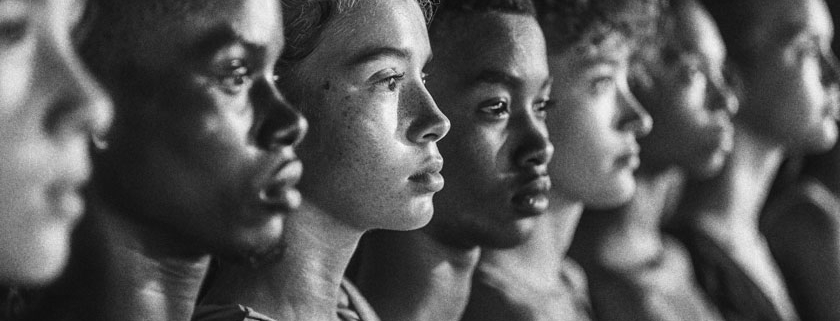Generations in Transition: From Silent Heroes to Digital Pioneers – A Journey Through the Ages of Humanity
It’s Sunday, just another day, and I’ve decided to write more on my blog—sharing more about my life and experiences, particularly how I’ve trained myself to adopt a completely neutral perspective that allows me to see things in an entirely different way. Today, I learned that an acquaintance passed away. Not long ago, he had enthusiastically told me how, at 81, he had hunted a chamois in Austria. He belonged to the “Silent Generation,” a vanishing group from whom we still have so much to learn.
I genuinely enjoy surrounding myself with people from this generation, almost as if I’m trying to absorb their knowledge and experiences into my own identity. They possess wisdom, and there is an incredible amount to learn from them.
Experience has shaped me into who I am today, and now I want to share with you how generations are categorized. The next time you read an article about the “problem with Generation Z,” you’ll be able to understand what that really means.
Understanding Generations and Their Significance
In anthropology and sociology, we categorize people into generational groups to better understand societal and cultural differences. These classifications help explain behavioral patterns, values, and attitudes typical of certain age groups.
Before diving into the well-known 20th-century generations, it’s worth looking at those preceding the Lost Generation. These lesser-known yet equally important groups laid the foundation for many of the societal structures we have today.
• The Missionary Generation (1860–1882) grew up during a period of intense industrial growth and social change. These individuals were deeply engaged in reform movements advocating for women’s suffrage, workers’ rights, and social justice. Their activism left a lasting impact on society.
• The Progressive Generation (1843–1860) witnessed the upheavals of the 19th century, including the revolutions of 1848 and the American Civil War. They were the driving force behind numerous political and social reforms, shaping a more modern society.
• The Gilded Generation (1822–1842) came of age during rapid economic expansion and technological advancement. These individuals played a key role in industrialization, often as ambitious entrepreneurs, laying the economic groundwork for future generations.
These groups contributed through innovation, determination, and a willingness to challenge the status quo. Their legacies shaped the modern world and influenced every generation that followed.
The Generations of the 20th and 21st Centuries
• Lost Generation (1883–1900): The term, popularized by Ernest Hemingway, describes those who came of age during World War I. Disillusioned and questioning traditional values, many sought refuge in art and literature.
• G.I. Generation (1901–1927): Also called the “Greatest Generation,” they endured the Great Depression and fought in World War II. Known for their resilience and strong sense of duty, they rebuilt economies and laid the foundation for post-war prosperity.
• Silent Generation (1928–1945): Raised in times of hardship, they valued discipline, loyalty, and perseverance. Their contributions to society were often quiet yet profound, shaping stable institutions and communities.
• Baby Boomers (1946–1964): Born into post-war prosperity, they experienced the civil rights movement, the space race, and the rise of consumer culture. They redefined societal norms and created many of the systems we rely on today.
• Generation X (1965–1980): Sometimes called the “forgotten generation,” they bridged the gap between analog and digital life. They grew up during the Cold War, witnessed the birth of the internet, and became known for their independence and skepticism.
• Millennials (1981–1996): Shaped by globalization, economic instability, and technological breakthroughs, they are often labeled as entitled but are, in fact, driven by purpose and innovation. They prioritize experiences over material possessions and seek work-life balance.
• Zillennials (1993–1999): Straddling the line between Millennials and Gen Z, they experienced both a world without and with social media. They act as intermediaries between digital natives and older generations.
• Generation Z (1997–2012): The first true digital natives, they are socially and environmentally conscious, hyper-connected, and adaptable. Critics argue they are constantly online, but their tech fluency positions them as pioneers of future change.
• Generation Alpha (2013–2024): Born into a world dominated by AI and sustainability efforts, they will grow up in an era unlike any before. Their upbringing will redefine parenting, education, and the global workforce.
• Generation Beta (2025–2039): Not yet born, but their world will be shaped by fully integrated AI and groundbreaking technological innovations. They could be the ones to solve the challenges we struggle with today.
Why Do We Define Generations?
We categorize generations not just to label age groups, but to understand the cultural and social transformations that shape our world. Each generation brings new perspectives, values, and challenges, forcing society to adapt and evolve.
By recognizing these differences, we can navigate change more effectively. Generations are like brushstrokes on the canvas of history, each adding to the bigger picture of human progress.
In an upcoming post, I will explore the darker aspects of these eras, was crime truly worse in the past, or have our perceptions simply changed? And is the world today as dangerous as some claim? Stay tuned, it’s going to be an intriguing discussion.
And because those who know me expect a touch of polemic: Whenever I hear people say that “the younger generations know nothing” and that “everything was better in the past,” I wonder are the young really clueless, or have we simply forgotten what it means to be young?



